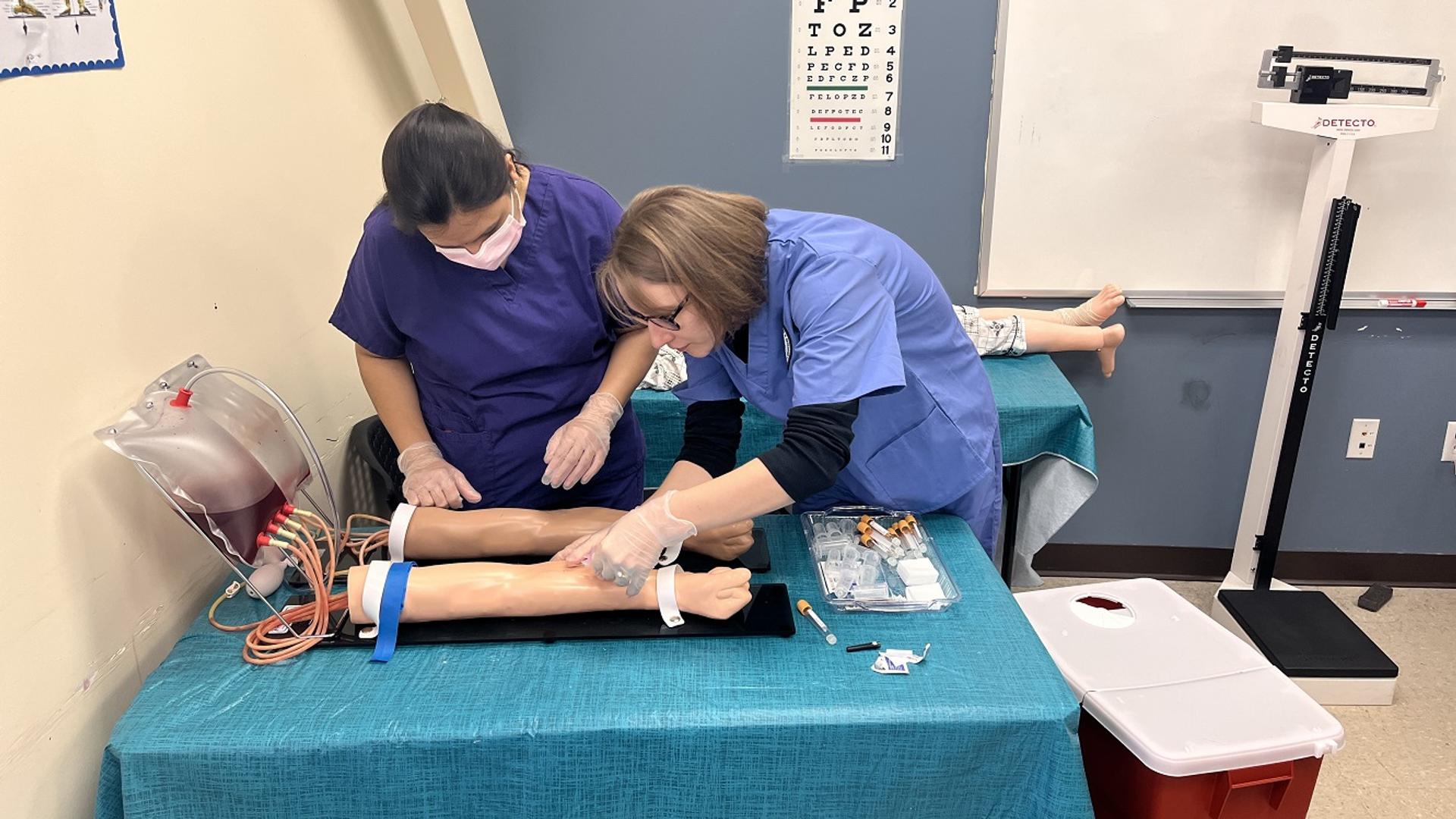Some Known Factual Statements About Northeast Medical Institute - New Haven Campus Phlebotomy Course & Cna Class
Some Known Factual Statements About Northeast Medical Institute - New Haven Campus Phlebotomy Course & Cna Class
Blog Article
Some Known Details About Northeast Medical Institute - New Haven Campus Phlebotomy Course & Cna Class
Table of ContentsHow Northeast Medical Institute - New Haven Campus Phlebotomy Course & Cna Class can Save You Time, Stress, and Money.Our Northeast Medical Institute - New Haven Campus Phlebotomy Course & Cna Class IdeasSome Known Facts About Northeast Medical Institute - New Haven Campus Phlebotomy Course & Cna Class.Northeast Medical Institute - New Haven Campus Phlebotomy Course & Cna Class Fundamentals ExplainedThe Northeast Medical Institute - New Haven Campus Phlebotomy Course & Cna Class StatementsGetting My Northeast Medical Institute - New Haven Campus Phlebotomy Course & Cna Class To Work
Nevertheless, the use of such gadgets need to be come with by various other infection avoidance and control techniques, and training in their usage. Not all safety and security tools are relevant to phlebotomy. Prior to choosing a safety-engineered gadget, users ought to completely check out offered devices to determine their suitable use, compatibility with existing phlebotomy practices, and effectiveness in shielding personnel and individuals (12, 33).For setups with low sources, price is a motoring element in purchase of safety-engineered devices. Where safety-engineered tools are not available, proficient use of a needle and syringe is appropriate.
labelling); transport problems; interpretation of outcomes for clinical administration. In an outpatient division or clinic, offer a committed phlebotomy workstation containing: a tidy surface area with 2 chairs (one for the phlebotomist and the various other for the person); a hand wash basin with soap, running water and paper towels; alcohol hand rub. In the blood-sampling space for an outpatient department or clinic, offer a comfy reclining couch with an arm rest.
Northeast Medical Institute - New Haven Campus Phlebotomy Course & Cna Class - Questions
Make certain that the signs for blood sampling are plainly defined, either in a written method or in documented directions (e.g. in a laboratory kind). At all times, follow the strategies for infection avoidance and control noted in Table 2.2. Infection avoidance and control practices. Accumulate all the equipment required for the treatment and place it within secure and simple reach on a tray or trolley, making certain that all the products are plainly visible.
Where the individual is grown-up and conscious, adhere to the steps described below. Present yourself to the individual, and ask the patient to specify their full name. Examine that the lab type matches the patient's identification (i.e. match the client's information with the research laboratory form, to ensure precise identification). Ask whether the patent has allergies, fears or has ever fainted during previous shots or blood draws.
Make the client comfortable in a supine position (if feasible). The patient has a right to decline an examination at any type of time prior to the blood sampling, so it is essential to ensure that the individual has recognized the procedure - PCT Courses.
Northeast Medical Institute - New Haven Campus Phlebotomy Course & Cna Class Can Be Fun For Everyone
Expand the client's arm and inspect the antecubital fossa or forearm. Find a vein of a great size that is noticeable, straight and clear. The representation in Section 2.3, shows typical positions of the vessels, however several variations are possible. The typical cubital capillary lies between muscles and is normally the most very easy to penetrate.
DO NOT insert the needle where capillaries are diverting, since this increases the possibility of a haematoma. The capillary must be visible without applying the tourniquet. Finding the blood vessel will certainly help in determining the appropriate size of needle. Apply the tourniquet concerning 45 finger sizes above the venepuncture site and re-examine the capillary.
Samplings from central lines carry a danger of contamination or erroneous laboratory test outcomes. It is appropriate, yet not excellent, to draw blood specimens when initial presenting an in-dwelling venous device, before linking the cannula to the intravenous liquids.
Some Ideas on Northeast Medical Institute - New Haven Campus Phlebotomy Course & Cna Class You Should Know
Failing to permit enough get in touch with time enhances the threat of contamination. DO NOT touch the cleaned up site; in particular, DO NOT put a finger over the blood vessel to lead the shaft of the exposed needle.
Ask the client to develop a clenched fist so the capillaries are more noticeable. Go into the capillary quickly at a 30 degree angle or less, and remain to present the needle along the capillary at the most convenient angle of entry - PCT Training. When adequate blood has been collected, release the tourniquet BEFORE taking out the needle
The Ultimate Guide To Northeast Medical Institute - New Haven Campus Phlebotomy Course & Cna Class
Take out the needle carefully and apply mild stress to the site with a clean gauze or completely dry cotton-wool ball. Ask the individual to hold the gauze or cotton wool in area, with the arm prolonged and raised. Ask the person NOT to bend the arm, because doing so triggers a haematoma.

The Best Strategy To Use For Northeast Medical Institute - New Haven Campus Phlebotomy Course & Cna Class
Do not press the syringe bettor since additional stress raises the danger of haemolysis. Where feasible, keep televisions in a rack and move the shelf towards you. Infuse downwards right into the proper coloured stopper. DO NOT get rid of the stopper since it will certainly launch the vacuum cleaner. If the example tube does not have a rubber stopper, inject visit site incredibly slowly into television as decreasing the stress and speed utilized to move the specimen minimizes the threat of haemolysis.

Report this page